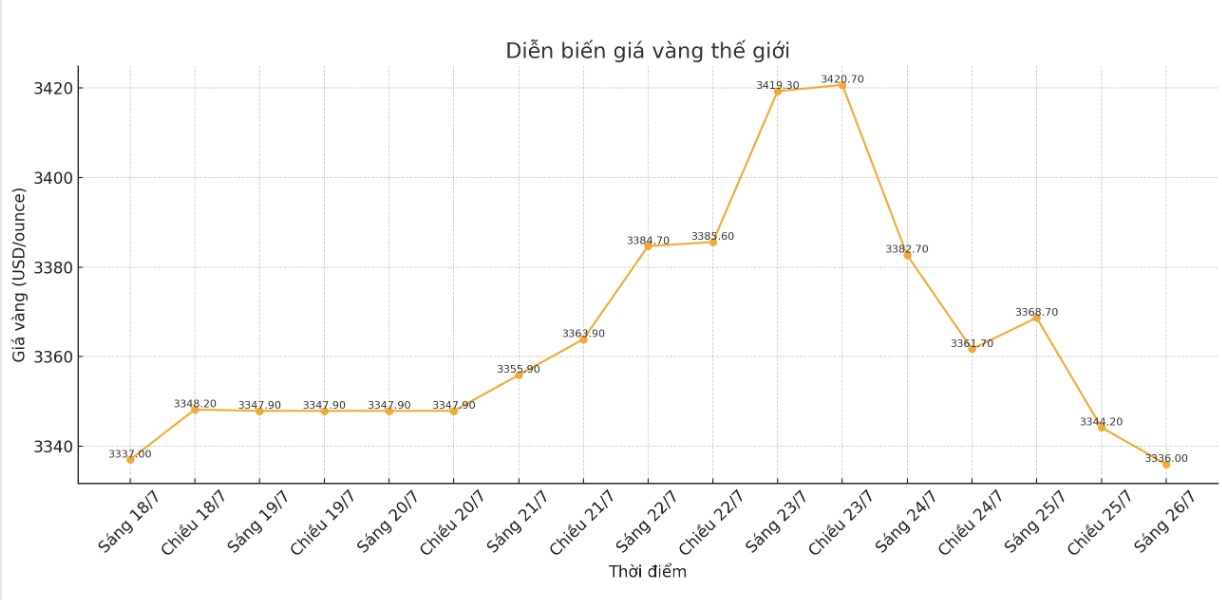According to the latest data from the China Gold Association (CGA), China's gold consumption in the first half of 2025 decreased by 3.54%.
The CGA said total gold consumption reached 505.21 tons. The most obvious decline was in the jewelry segment, with jewelry sales down 26% compared to the first half of 2024, to only 199.83 tons.
Meanwhile, demand for gold bars and coins skyrocketed by 23.69%, reaching 264.24 tons in the first 6 months of the year.
Gold used for industry and other purposes also increased by 2.59% over the same period last year, reaching 41.14 tons.
The CGA data is in line with data from Ray Jia - Head of China Research at the World Gold Council (WGC) - who noted that although the Chinese gold jewelry market weakened in the first half of 2025, the standard gold price in Shanghai and cash flow into gold ETFs all hit a penny-year record.

Jia said that the amount of gold withdrawn from the Shanghai Gold Exchange (SGE) in the first half of the year was 678 tons, down 18% over the same period and 10% lower than the 10-year average.
Jury demand has declined due to the sharp increase in gold prices, consumers have tightened spending and the industry is continuing the restructuring process. However, the weakness in the jewelry sector was partly offset by investment demand: the increase in gold prices, safe-haven demand, especially in April when US-China trade tensions escalated and the poor performance of other domestic assets boosted gold bar and xu sales" - he commented.
However, he warned that in June, investment momentum in gold bars and coins "cooled down as gold prices fluctuated within a narrow range and investors stood on the sidelines."
In contrast, demand for gold ETFs recovered last month, closing the first half of the year at its strongest ever. Current capital flows into Chinese gold ETFs turned positive in June, attracting 1 billion yuan (equivalent to 137 million USD). As US-China trade tensions cool down and the yuan strengthens, safe-haven demand for gold has also eased, leaving ETF flows less volatile, Jia wrote.
In the first 6 months of 2025, China's gold ETFs attracted an additional $8.8 billion. These capital flows were driven by similar factors that supported gold bar and coins sales.
The total value of assets under management (AUM) of Chinese gold ETFs increased by 116%, reaching 153 billion yuan ($21 billion) at the end of June. Meanwhile, the total gold holdings increased by 74%, to 200 tons, he said.
The People's Bank of China (PBoC) also continued to officially buy gold last month. The PBoC reported buying 2 more tons of gold in June, marking the 8th consecutive month of gold purchases.
China's total official gold reserves are currently at 2,299 tons. In the first half of 2025, China has continuously bought gold with different monthly purchases totaling 19 tons. During this period, the share of gold in China's total foreign exchange reserves increased from 5.5% in December 2024 to 6.7% at the end of June, Jia noted.
Looking ahead, Jia warned that weak consumer confidence and industry restructuring could continue to put pressure on gold jewelry demand, however, investment demand for gold is still likely to remain high in the second half of 2025.









